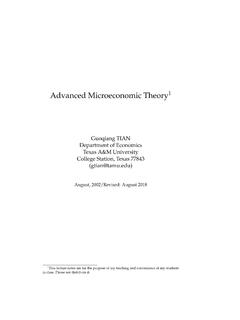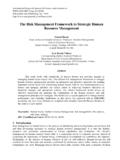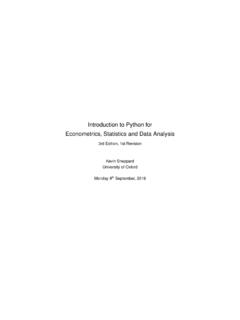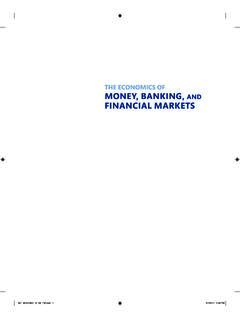Transcription of Environmental accounting: an essential ... - Green Economics
1 Copyright 2004 John Wiley & Sons, Ltd and ERP EnvironmentEnvironmental accounting is on anexpansion path. With increasing socialfocus on the environment, accounting fills an expectation role, to measureenvironmental performance. The status ofenvironmental awareness provides adynamic for business reporting itsenvironmental performance. Examiningthe integration of Environmental policywith business policy is the focus of thisresearch. The business firm s strategyincludes responding to capital andoperating costs of pollution controlequipment. This is caused by increasingpublic concerns over environmentalissues, and by a recent government-ledtrend to incentive-based regulation. Thispaper describes the environmentalcomponent of the business strategy,producing the required performancereports and recognizing the multipleskills required to measure, compile andanalyze the requisite data.
2 SpecialENVIRONMENTALACCOUNTING: AN ESSENTIALCOMPONENT OF BUSINESS STRATEGYM ehenna Yakhou*1and Vernon P. Dorweiler21 Georgia College and State University, USA2 Michigan Technological University, USAB usiness Strategy and the EnvironmentBus. Strat. Env. 13, 65 77 (2004)Published online in Wiley InterScience ( ). DOI: of the research is on generationof reports and their standards, for therange of business and regulatorypurposes. Copyright 2004 John Wiley &Sons, Ltd and ERP 18 October 2002 Revised 12 May 2003 Accepted 9 July 2003 INTRODUCTIONE nvironmental accounting is an inclusivefield of accounting. It provides reportsfor both internal use, generating Environmental information to help make management decisions on pricing, controllingoverhead and capital budgeting, and externaluse, disclosing Environmental information ofinterest to the public and to the financial com-munity.
3 Internal use is better termed environ-mental management accounting (Bartolomeoet al., 2000).For the purpose of this research , both internal and external uses are considered. Thecontribution of multiple disciplines provides a base for determination of environmentalimpacts and related costs. Specific details of thatdetermination serve one or both of the uses.* Correspondence to: Dr. M. Yakhou, The J. Whitney BuntingSchool of Business, Georgia College and State University, Campus Box 15, Milledgeville, GA 31061-0490, : of business activity on the environ-ment is found in several forms. Media: air, water, underground pollution.
4 Targets: drinking water, land and habitat forendangered and threatened species. Global sites: oceans, atmosphere, land array of pollutants, including toxic, hazardous and warming , is accountable tobusiness activities. From this range of Environmental impacts, multiple disciplinesare needed for analysis of effects, and for integration into management decisions andaccounting disciplines needed include(i) Environmental science,(ii) Environmental law and regulation,(iii) finance and risk management and(iv) management policies and control range of Environmental costs, energy andmaterial use and waste disposal, insurance andfines and penalties, shows participation ofmultiple disciplines, along with accountingsub-disciplines.
5 The yield of this effort is thedecision support system, in which environ-mental impact can be determined specificallyin the following terms: FCA, full cost accounting, TCA, total cost assessment, LCC, life-cycle costs, LCCA, life-cycle cost analysis, and TQEM, total quality Environmental of Environmental reporting includefull-cost pricing and eco-accounting . Also, an Environmental management system, EMS,provides a databank of Environmental perfor-mance data, from which Environmental costaccounting, ECA, relating all environmentalcosts, can be directly produced (Lally, 1998).Cross-functional goals and procedures indi-cate that business policy and environmentalpolicy are intertwined (Dorweiler and Yakhou,2002); see Figure 1.
6 Senior managers at the institutional levelestablish Environmental policy and assessenvironmental performance. Environmental managers at the operationallevel implement Environmental policy. Environmental staff is involved in capitaldecision-making for Environmental multiple functional activities are included:capital budgeting and expense budgeting;financial and non-financial performance measurements; budget control and productcosting. Multi-disciplinary teams have a cleardistribution of tasks and functions, at institu-tional levels and at operational that relationships in environmentalreporting are integrated.
7 The data sources arebased in design, engineering and operationsrecords, rather than broad areas such as energycosts and waste minimization. The extensivedata are converted as input to the side benefit is the decreased need for allo-cation of Environmental costs to products andprocesses. Also, the nature of environmentalcosts determines the capital investment assess-ment method. Discounted-cash flow is pre-ferred, rather than payback period, given thelonger time horizon for benefits from environ-mental capital investment (Grinnell and Hunt,2000). Environmental ACCOUNTINGB efore tracing the role of business strategy andenvironmental accounting, a base understand-ing of Environmental accounting is useful.
8 Thisis the purpose of the the outset, Environmental accounting hasproceeded through a period of uncertainstatus. Mathews (1997) describes the develop-ment in four phases:1970s descriptive, with normativemodels of conduct;M. YAKHOU AND V. P. DORWEILERC opyright 2004 John Wiley & Sons, Ltd and ERP EnvironmentBus. Strat. , 65 77 (2004)661981 1990debate on the role of accountingin disclosing information onenvironmental activities;1991 1995maturing of environmentalaccounting, in making en-vironmental disclosures, and in launching Environmental auditing;nowthe role of environmentalaccounting is viewed as measuring Environmental per-formance exceeding regulatorystandards.
9 This role was initiated in about ACCOUNTINGC opyright 2004 John Wiley & Sons, Ltd and ERP EnvironmentBus. Strat. , 65 77 (2004)67 BUSINESS POLICY and Environmental POLICYMISSIONB oards of Directors Constitution and Institutional Investors Environmental policy Corporate sustainabilitySTATUS-ANALYSISB usiness purpose Environmental protection GOALS Use of resources Responsibility toenvironmental Capital principles*
10 Workforce NEPA prevent Environmental Markets degradation Media, location OBJECTIVESP erformance targets Statutory policy by location, market Statutory standards STRATEGY Compliance at maximum Compliance within standards cost effectiveness and preserving the environment IMPLEMENTATIONS upply chain Neighbors, communityManufacturing sustainability of resource use Distribution system TACTICS Set mode of operations for Use of resourcesmaximum productivity material, energy, other natural resource greening product, process OPERATIONSO ptimize production Avoid violationsMinimize waste Emissions.








